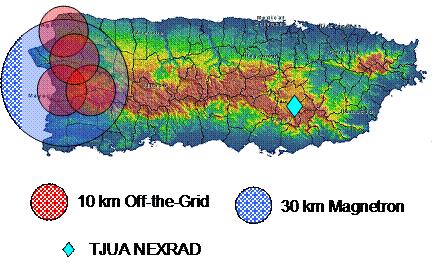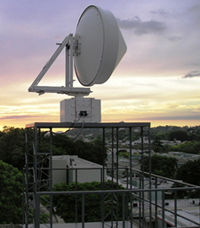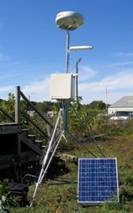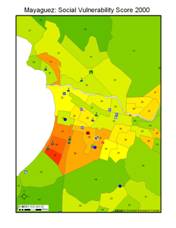Student Test Bed
The Puerto Rico Student Test Bed: QPE Based Radar Network System Design Process & Areas of Focus Initiated
The Puerto Rico Student Test Bed is an innovative education project led by a multi-level, multi-institution team of students, ranging from Undergraduate to Ph.D. level, from a variety of scientific and engineering fields, located at the core CASA partner campuses. For this project, the student team will design and build a test bed on the island of Puerto Rico, with the goal of validating CASA's DCAS approach in variable terrain. Throughout this project the students will be mentored by a cross-campus faculty team with a focal point on the UPRM campus.
The Puerto Rico test bed will develop an end-to-end system with a heterogeneous network of radars using off-the-shelf hardware to construct a 30km radar while developing a new type of low power radar. The network will be designed to provide detailed precipitation estimates (QPE) to the people of Puerto Rico while educating students and advancing radar technology.

This image shows the proposed test bed coverage area on the island of Puerto Rico.
 This project, which began in January 2004, includes students from all four CASA partner institutions and two outreach institutions. This student team, led by Jorge Trabal, UMass Engineering graduate student and UPRM future faculty, participate in bi-weekly conference calls to communicate research ideas and work out test bed logistics. To date, they have initiated a system design process and have identified five areas of focus: the development of 30km magnetron radar, an off-the-grid radar design to explore higher density DCAS networks, networking protocols, vulnerability studies and complex terrain QPE analysis. This project, which began in January 2004, includes students from all four CASA partner institutions and two outreach institutions. This student team, led by Jorge Trabal, UMass Engineering graduate student and UPRM future faculty, participate in bi-weekly conference calls to communicate research ideas and work out test bed logistics. To date, they have initiated a system design process and have identified five areas of focus: the development of 30km magnetron radar, an off-the-grid radar design to explore higher density DCAS networks, networking protocols, vulnerability studies and complex terrain QPE analysis.
Magnetron Radar - The 30km radar is currently under development and testing by undergraduate and graduate students at UMass and UPRM. The radar is located on the rooftop of the UPRM Mayagüez Campus Stefani Building. Based on a modification of a Raytheon MK2 marine radar, the radar will provide an umbrella observation over a low power, small area coverage dense network of four Off-The-Grid radars. CASA industry partner Raytheon has provided these magnetron radars at no cost to the project.
Off-the-Grid Radar - The off-the-grid radar is being designed by UMass students in the Microwave Remote Sensing (MIRSL) lab in collaboration with graduate students at UPRM and Smith College. Both graduate and undergraduate students are building the hardware and software components of the radar while students in the Computer Science department explore the theoretical aspects of the communications network. An undergraduate student at UPRM is contributing an antenna to upgrade the off-the-grid radars and improve their sensitivity. A Smith College student who participated in this summer's Research Experience for Undergraduates (REU) program is contributing the design of the solar-based power system.

Networking Protocols - At the University of Puerto Rico Mayagüez, students are developing a series of grid services for processing data collected by the network. These services include data storage and retrieval, QPE algorithmis designed at CSU and implemented in Puerto Rico, and a web portal for data display. Graduate students at Colorado State University and UMass are working to develop network protocols for moving data across networks and looking at wireless vs. wired capabilities of the network. Additional students are contributing to the developing of the QPE algorithms.

Vulnerability Study - The social impact of the technology developed by CASA is vital for the success of this Engineering Research Center. At the Disaster Research Center, Jenniffer Santos, a graduate student in sociology at the University of Delaware, is leading an interdisciplinary research effort to develop a holistic quantitative measurement of vulnerability in Puerto Rico. The proposed model will incorporate three main decisions of vulnerability to natural disasters: social, climatological, and physical vulnerability. The main goal of this student led project is to identify which areas are more prone to flooding, and what are the social characteristics of the residents of those at-risk areas. A number of undergraduate and graduate students from a variety of disciplines, including sociology, political science, meteorology, hydrology, and engineering, are currently involved in this initiative. The outcomes of this project will be used for the allocation of radar resources.
|